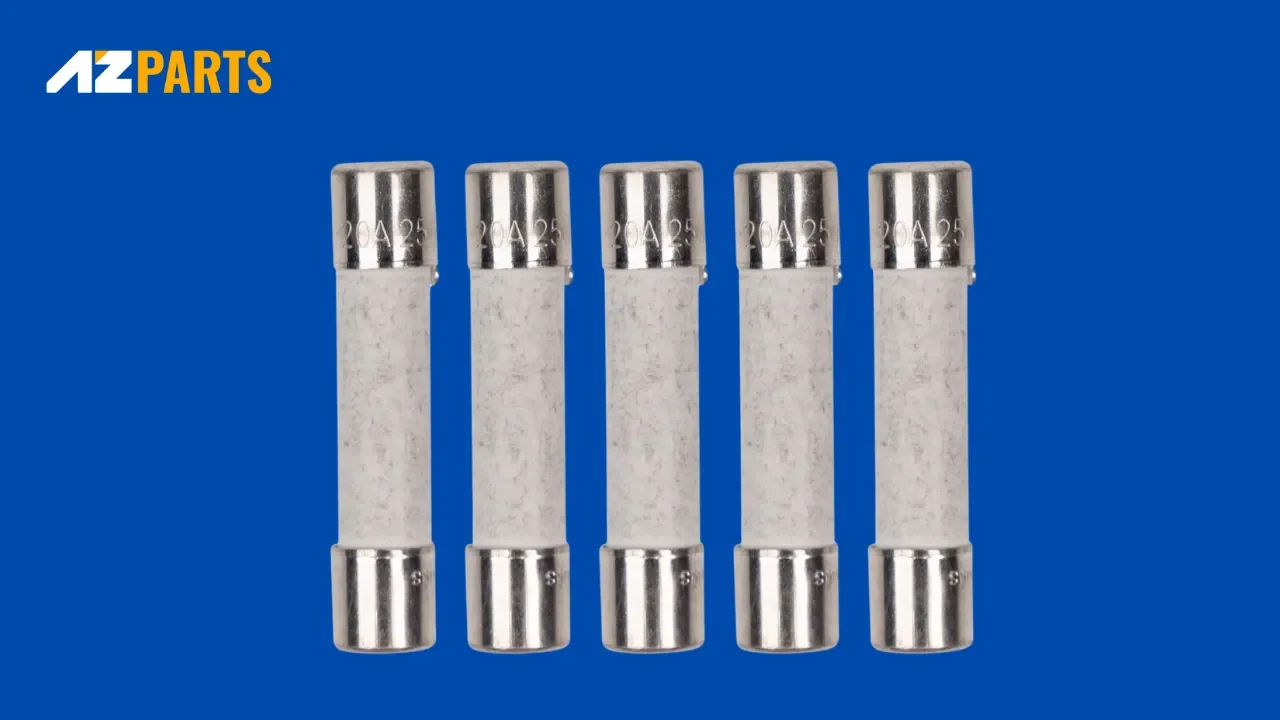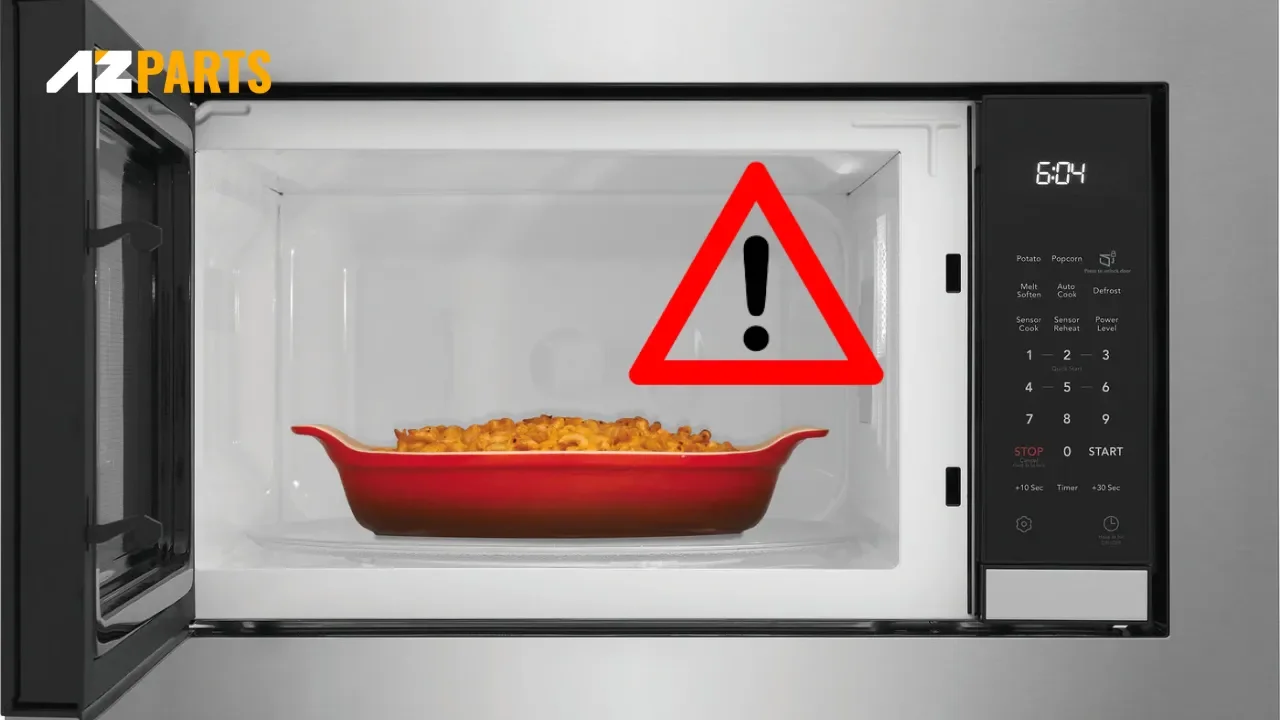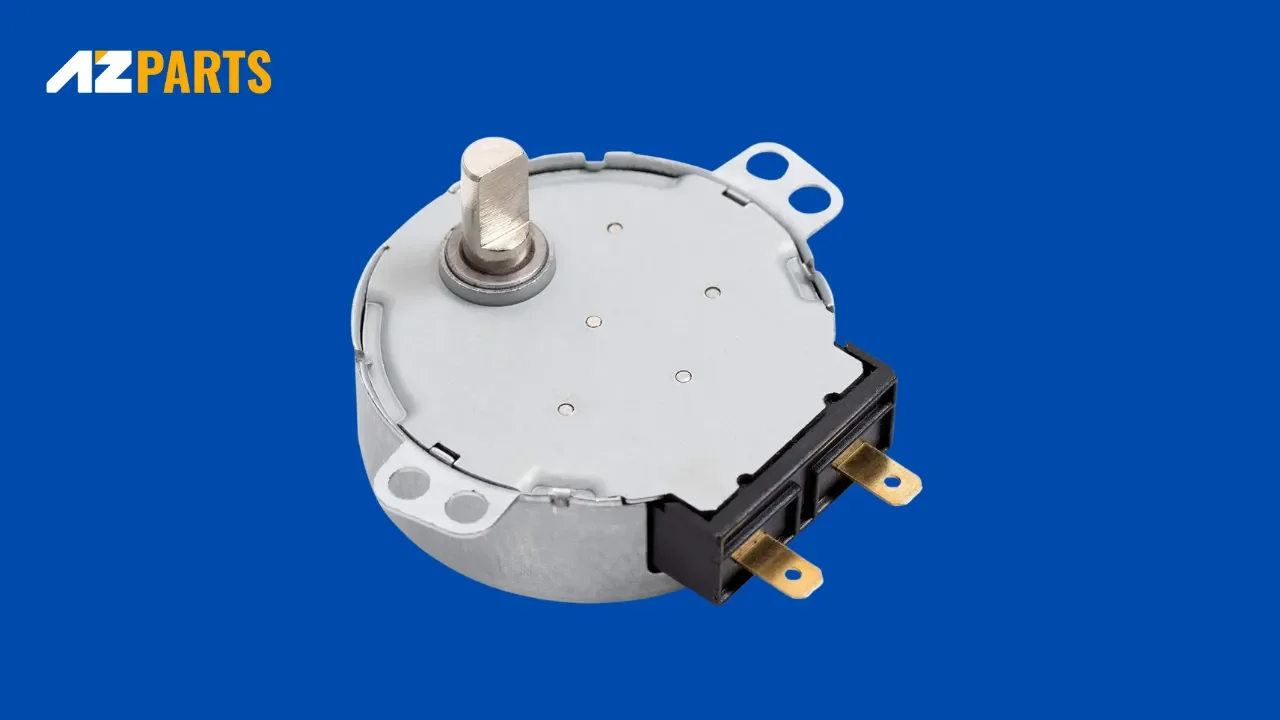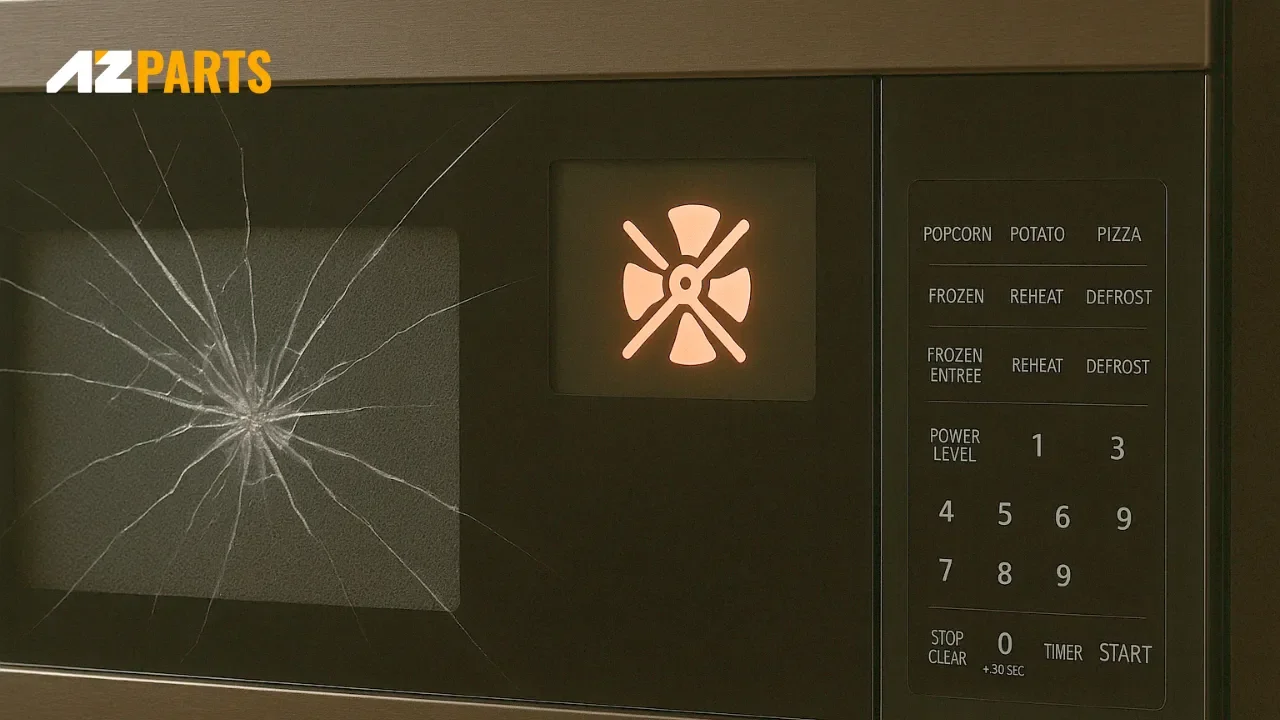Repair help
Microwave Making Noises? Here Are 5 Possible Causes
AZparts Team
Updated on July 31, 2025
6 min read
Hearing strange sounds coming from your microwave? Whether it’s buzzing, humming, grinding, or clicking, unusual noises can be more than just annoying, they may be a sign of internal issues. If your microwave is making noise, it’s important to identify the source before it leads to a bigger problem. In this guide, join AZParts to explore five common causes and what you can do about them.

1. Faulty Magnetron
The magnetron is the component that generates high-frequency electromagnetic waves to heat your food. When it functions properly, the magnetron may produce a soft clicking sound, especially when the microwave is operating on a low power setting. However, if the sound becomes louder or turns into a high-pitched whining noise, it may indicate that the magnetron is failing due to age or heavy use.
To check whether the magnetron is the issue, you can try running the microwave on a low setting. If the noise disappears or becomes less noticeable when the magnetron cycles off, this observation suggests a potential magnetron problem. A burning smell that comes from the microwave can also be a strong sign of a failing magnetron.
Here is how you can diagnose and fix a faulty magnetron:
- First, make sure you unplug the microwave to ensure safety.
- You should remove the top cover of the microwave to access internal parts.
- Before doing anything else, you must discharge the capacitor carefully to avoid electric shock.
- You can use a multimeter to test the magnetron for continuity. A properly working magnetron should show less than one ohm of resistance.
- If the reading from the multimeter is not correct, then the magnetron is defective and needs to be replaced.

If your microwave is making unusual or loud noises, a faulty magnetron could be the reason (Source: AZParts)
If you are not familiar with appliance repair or electrical components, you should contact a qualified technician. Attempting to repair the magnetron yourself can be dangerous due to the high voltage inside the microwave.
2. Faulty Diode
The diode is part of the high-voltage circuit that works together with the magnetron and capacitor. Its main job is to convert alternating current (AC) into direct current (DC), providing the high voltage required to power the magnetron. When the diode becomes faulty, it can cause a loud humming or buzzing noise while the microwave is running.
You can follow these steps to diagnose and fix a faulty diode:
- First, make sure the microwave is completely unplugged from the power source.
- Remove the top cover of the microwave to gain access to internal components.
- Carefully discharge the capacitor to prevent electrical shock.
- Use a multimeter to test the diode for resistance. A healthy diode will usually show a reading between 50,000 and 200,000 ohms.
- Reverse the leads on the multimeter to check for continuity in the opposite direction. The diode should only show continuity in one direction.
- If the diode shows no reading or continuity in both directions, it is defective and must be replaced.
When replacing a damaged diode, make sure to use high-quality parts to ensure safety and long-term performance. You can find reliable microwave diodes, capacitors, and microwave fuses at AZParts, your trusted source for appliance replacement components.

A faulty diode is another common reason why your microwave may be making unusual noises or failing to heat properly (Source: AZParts)
Always be extremely careful when working with microwave internals. If you're unsure about the repair process, it's best to call a professional technician.
3. Malfunctioning Cooling Fan
If your microwave is making unusual noises, especially from the back, the cooling fan might be the cause. This component helps regulate the temperature inside the microwave by keeping the internal parts from overheating. When the fan becomes dislodged or debris gets stuck in it, you might hear a rattling or buzzing noise during operation.
To diagnose and fix a faulty cooling fan, follow these steps:
- First, make sure the microwave is unplugged from the power source to ensure safety during inspection.
- Next, discharge the capacitor to avoid any risk of electric shock.
- If any internal components are blocking access to the cooling fan, remove them carefully.
- Examine the fan to determine if it is spinning freely. If there is no debris but the fan still does not spin properly, the fan motor may be worn out and require replacement.
- Use a multimeter to test the cooling fan motor for continuity. A functioning motor should measure approximately 280 ohms, depending on the model.
- If the fan motor is defective, it should be replaced to restore proper airflow and reduce noise.

A malfunctioning fan motor can also lead to excessive noise or reduced cooling efficiency (Source: AZParts)
Always exercise caution when working inside a microwave. If you need replacement parts, AZParts offers a range of microwave fan motors and components to help you complete the repair safely and effectively.
4. Faulty Turntable Motor
When the turntable motor begins to fail, it often produces a clicking or grinding sound during operation. This motor is responsible for rotating the turntable plate, which helps heat food evenly. If it malfunctions, not only will the microwave become noisy, but food may also heat unevenly.
In most microwave models, the turntable motor can be accessed from underneath the unit. If this is not possible on your microwave, you will need to remove the outer casing to reach the motor.
To diagnose and fix a faulty turntable motor, follow these steps:
- First, unplug the microwave from the power source to ensure safety.
- Remove the turntable plate and the support roller inside the microwave.
- Locate the motor panel underneath the microwave and unscrew it.
- Use a multimeter to test the motor for electrical continuity.
- If the turntable motor shows no continuity, it is defective and must be replaced.
For reliable replacement parts, you can find a high-quality microwave turntable motor at AZParts. Replacing a faulty motor will not only eliminate the noise but also restore the microwave’s proper rotation and heating function.

This motor is responsible for rotating the turntable plate, which helps heat food evenly (Source: AZParts)
5. Broken Stirrer Motor
The broken stirrer motor powers a metal blade that helps distribute microwave energy evenly inside the cavity. When the stirrer motor is faulty, it may struggle to turn the blade, causing an unusual grinding or buzzing sound. This can lead to uneven heating or cooking of food.
To check and fix a broken stirrer motor, follow these steps:
- First, unplug the microwave from the power source to ensure safety.
- Next, access the stirrer motor by opening the microwave cavity above the turntable plate.
- Remove the cover that protects the stirrer motor.
- Inspect the stirrer blade to see if it has come loose or has been damaged.
- You may try disconnecting the stirrer motor, then briefly run the microwave to determine if the noise disappears.
- If the stirrer motor is found to be defective or damaged, it should be replaced with a new one.

When the stirrer motor is faulty, it may struggle to turn the blade, causing an unusual grinding or buzzing sound (Source: AZParts)
Always use caution when working inside the microwave, and consider contacting a professional if you're unsure about the process.
Unusual microwave sounds shouldn't be ignored. From faulty turntables to worn-out stirrer motors, each issue has a solution if caught early. If you’ve identified the cause and need quality microwave parts, AZParts has you covered. We offer a wide range of genuine microwave parts to help you fix the problem quickly and safely. Visit AZParts today and get your microwave running smoothly again.
Contact Info
Address: 8 The Green, Ste A, Dover, Delaware 19901-3618, United States
Email: support@azparts.com
Check out more:
2. Microwave Not Heating: Common Causes and Fixes
Microwave
Further Reading
Further Reading





